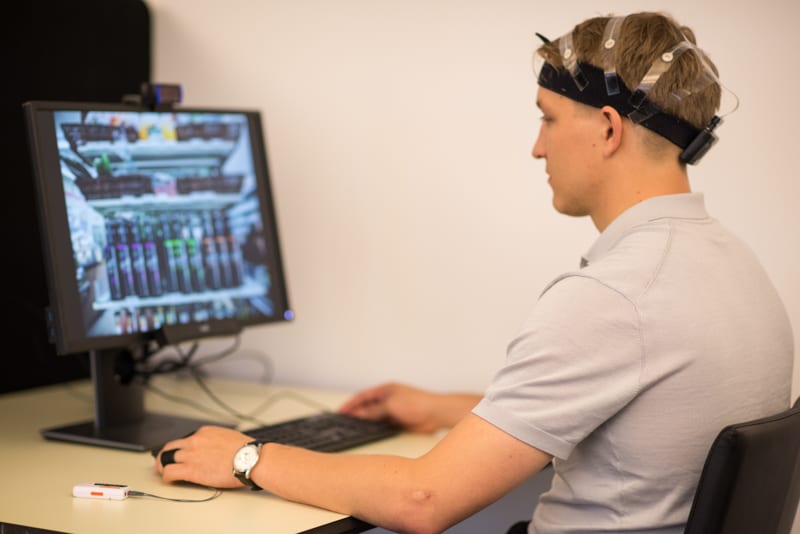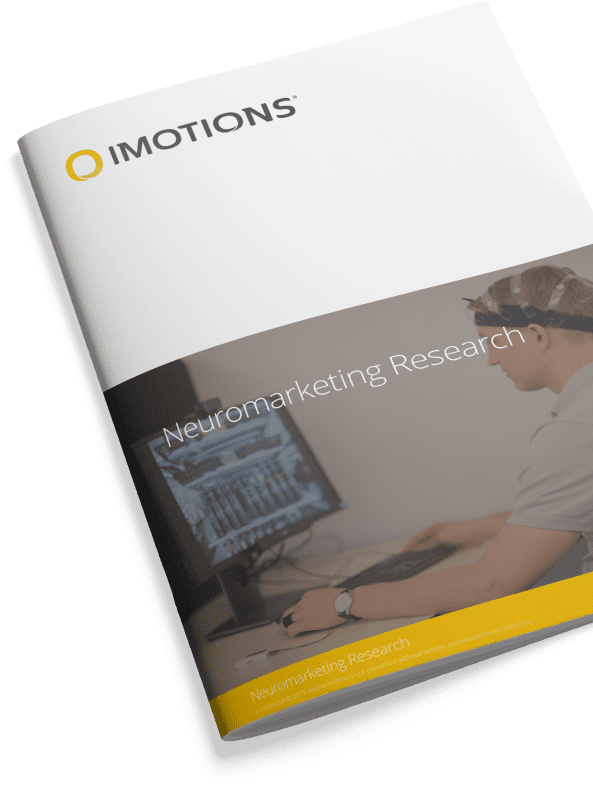If you’ve ever watched Mad Men, you’ve probably encountered the idea of the persuasive power of advertising – that an ad has the ability to explicitly or implicitly change your mind about a product, brand, or company.
Dominant theories of advertising have historically reflected this as well, with attention and purchase decision hierarchies being modeled on the premise that advertising is first and foremost persuasive. More recently, however, schools of thought have emerged among advertising and marketing scholars that challenge this model in favor of different yet powerful factors that contribute to consumer behavior: repetition, habit, and nudging.

These two camps, broadly grouped as Cognitivist vs Behaviorist, can provide a useful framework if you are designing and conducting human behavior studies with the goal of better understanding or predicting consumer behavior through advertising. In this post, we outline the two theories and how you can apply them to your study designs, questionnaire frameworks, and biosensor methodologies in human behavior research.
Cognitive vs Behavioral Theories of Advertising
Ever since the rise of mass communications in the early 20th century, marketers, advertisers, and communicators have based much of their campaign strategies on a central assumption: the premise that advertising convinces and persuades consumers of the products they should buy. A dominant model of this strategy for the past century has been the AIDA model, outlined formally by Timothy Joyce in 1967 [1]:
Attention → Interest → Desire → Action
The AIDA model assumes that consumers are rational – that they become aware of a brand or category (attend to it), take an interest in how the brand can benefit them, recognize their desire or fit based on the brand’s offerings, and then take action in the form of a purchase or consumption.
This model falls into the Cognitivist, or Strong Theory, of consumer behavior because it relies on the belief that customers are thinking, evaluating, and acting intentionally through a linear, cognitive purchase process. Because it is seen in the Strong Theory as having the power to change attitudes, advertising is perceived to be persuasive and convincing enough to move non-purchasers to start using a brand [2].
Despite its widespread acceptance in the market, the AIDA model has received some criticism for not accurately reflecting actual purchase behavior and for neglecting the steps that happen after a purchase. In response to this criticism, a new Behaviorist, or Weak Theory, was introduced, mainly in Europe, in the 1980s by advertising scholar Andrew Ehrenberg and is still catching on further afield today.
The main tenet of The Weak Theory is:
Awareness → Trial → Reinforcement
The ATR Model argues that advertising more passively influences habit-forming routines [2]. As Ehrenberg writes, “advertising can first arouse awareness and interest, nudge some customers towards a doubting first trial purchase (with the emphasis on trial, as in, ‘maybe i’ll try it’), and then provide some reassurance and reinforcement after that first purchase” [3].
The Weak Theory advocates not for changing brand perception but for creating awareness or refreshing reminders through advertising so that consumers form brand habits. Despite consumers’ intelligence, empirical evidence seems to support the behaviorist theory that brand awareness and recall tend to be low except for brands with large market share, and that not all of our decision-making is rational but influenced heavily by our emotions [4].

From a Behaviorist perspective, advertising is therefore powerful because of its ability to affect salience — simply put, how much awareness or overall familiarity a brand has in the market [5], influenced by factors such as repetition (like frequency of ads) and distinctiveness (like logo colors, creativity, or humor) – as opposed to brand differentiation in positioning, which supports the Cognitivist theory [6].
Incorporating the theories into your human behavior study design
Whichever theory you or your business models support, measuring advertising effectiveness accurately depends on good study design. Luckily, applied behavioral science research is a great way to go thanks to biosensor software like iMotions, which can track and synchronize data from participants’ emotional and physiological responses to ads. Here are some examples of methodologies that you can incorporate into your ad testing that correspond to the two theories.
Cognitivist/Strong Theory: Perception, Attention, Recall
- Seek to understand an ad’s persuasiveness by having respondents rank brand favorability before and after ad exposure, and compare with positive or negative valence from their facial expression analysis data during ad exposure.
- Test the effects of a content marketing strategy by gaze mapping respondents’ visual attention on a series of informative, content-rich blog posts for a high-involvement product, and compare the data to respondents’ self-reported knowledge and purchase intent about a product before and after reading the posts. Compare against a control group that is not exposed to the content.
- Assess the correlation between advertising and web users’ search and approach/avoidance behavior using eye tracking and EEG as they browse an e-commerce store and indicate purchase intent. Compare the same measurements against a control that is not exposed to advertising.

Behavioral/Weak Theory: Awareness, Habit, Emotions
- Compare eye tracking data by using heat maps and gaze mapping, as well as EDA/GSR peaks, of several versions of a package design having distinctive designs and/or colors with respondents’ stated answers about which design resonated with them most.
- Use Facial Expression Analysis and EDA to test emotional engagement with versions of video advertisements with humorous, shocking, or creative content compared to straightforward content, and ask them to recall the brands in a follow-up survey.
- Conduct a longitudinal study in which participants are repeatedly shown a series of advertisements, and follow up with them over time to see which brands, if any, they’ve adopted into their purchase rotation.
Conclusion
Whether your research or business use cases reinforce the Strong or Weak Theory – or both! – you can get closer to understanding how advertising influences brand awareness and consumer behavior with a combination of traditional market research methods and neuromarketing techniques.
It’s important to remember that combining stated answers with behavioral data will provide a more complete snapshot of how consumers actually think and feel about an ad or product, as opposed to gathering data with either of these techniques alone. If you’d like to explore more ideas surrounding how you can measure human behavior through nonconscious responses to ads, download our neuromarketing brochure below.
Download iMotions Neuromarketing Brochure
iMotions is the world’s leading biosensor platform.
Learn more about how iMotions can help you with your neuromarketing work and research

References
[1] Joyce, T. (1967). What Do We Know About How Advertising Works? London: J. Walter Thompson Co.
[2] Jones, J. P. (1990). Advertising: Strong Force or Weak Force? Two Views an Ocean Apart. International Journal of Advertising, 9(3), 233-246. DOI: 10.1080/02650487.1990.11107151
[3] Ehrenberg, A.S.C. (1992) Comments on How Advertising Works. The Journal of European Society for Opinion and Marketing Research, 20(3), 167-169.
[4] Weinberg, P. & Gottwald, W. (1982). Impulsive consumer buying as a result of emotions. Journal of Business Research, 10(1), 43-57. DOI: https://doi.org/10.1016/0148-2963(82)90016-9.
[5] Miller, S. & Berry, L. (1998). Brand Salience versus Brand Image: Two Theories of Advertising Effectiveness. Journal of Advertising Research, 38(5), 77-84.
[6] Romaniuk, J., Sharp, B. & Ehrenberg, A. (2007). Evidence concerning the importance of perceived brand differentiation. Australasian Marketing Journal (AMJ), 15, 42-54. DOI: 10.1016/S1441-3582(07)70042-3.










